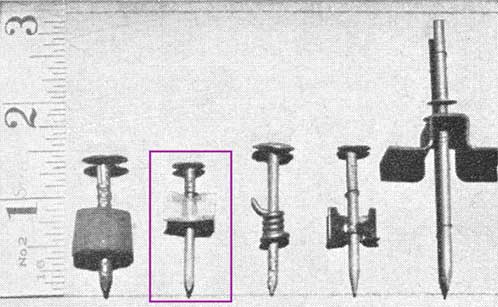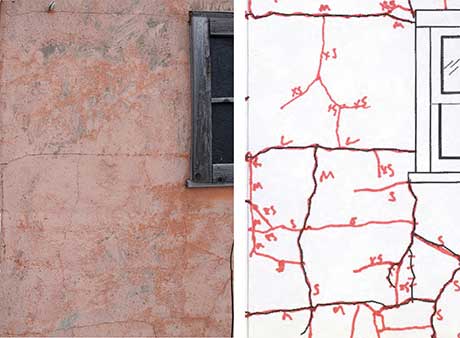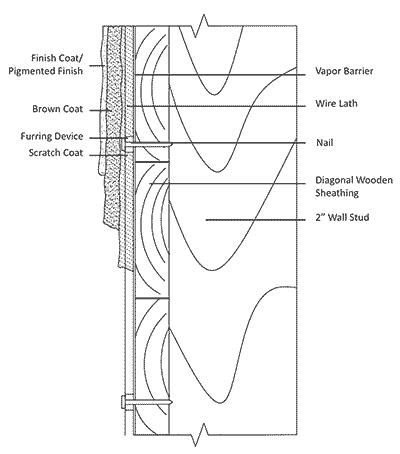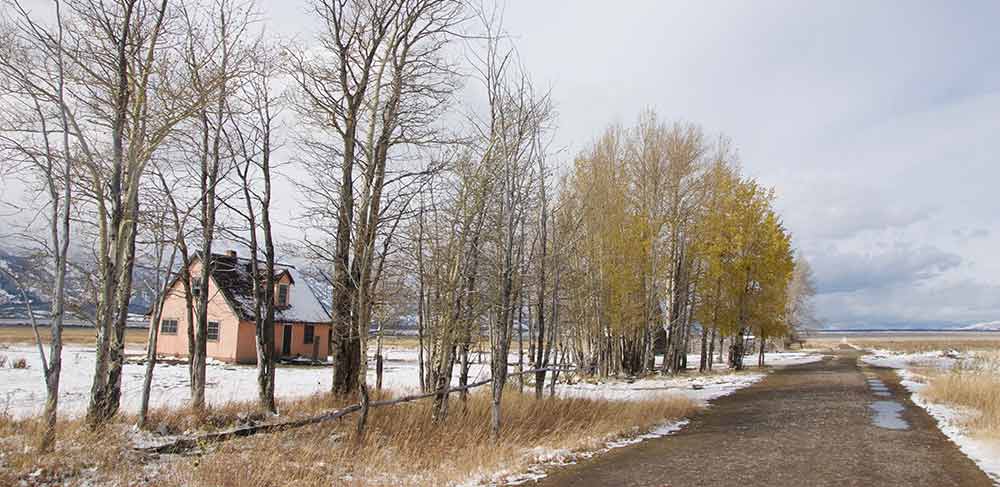|
| The
John
Moulton homestead stands out among the many vernacular log structures
in Grand Teton National Park for its near total preservation as built
in 1938. Among its character defining features is its distinctive: a
pink-painted cement stucco exterior. |
| The
exterior likely dates to the construction of the building in 1938. This
choice for the exterior, while common for the period in urban and
suburban America, was unusual in this rural Mormon community where its
choice expressed the meager success of a late homesteading family in
the Jackson Hole Valley. Given its high historical value, the current
condition of the exterior stucco is cause for concern as it exhibits
cracking, loss at the foundation, displacement, and
detachment of the whole system from the wooden sheathing underneath. |
|
|
 |
|
|
|
| An image from
1929 PCA literature exhibiting acceptable furring devices as well as
nail sizes for furring out lath. The device (boxed in purple) matches
that found at the Moulton homestead. (from “Plasterer’s Manual for
Applying Portland Cement Stucco and Plaster.”) |
|
|
| The
National Park
Service contacted the Center for Architectural Conservation (CAC) at
the University of Pennsylvania to document and record the condition of
the exterior
stucco at the Moulton homestead, to analyze the cause of the cracking
as well as the extent of damage, and produce a
treatment plan to ensure both the longevity of the structure and the
stucco exterior. In the first phase of this project, a full study of
the exterior was carried out including baseline condition
recording, annotated drawings, and material characterization
of the
cement stucco to outline the extent of damage. With this
information, in the second phase a series of treatments will be tested
to consolidate the remaining pink paint and to stabilize the cement
stucco. |
|
 |
|
| Cracks were
first traced onto CAD drawings from rectified photos and then
confirmed in the field. The width of the crack was noted alongside the
drawing, categorized from hairline to large and displaced. |
|
|
|
 |
|
| In
order to better consider the many possible causes
of failure, this study explored the use of non-destructive digital
tools as a method to investigate the extent, patterns, and correlation
of stucco failure to associated intrinsic and extrinsic factors. |
|
|
|
 |
| Cross
section of the exterior wall assembly, based on field observations and
contemporary product literature. The attachment system for the stucco
at the Moulton Homestead appears to have closely followed standard
practice,
despite a lack of construction resources in rural Wyoming. |
|
|
|
|
|
| First,
the stucco and its attachment system was analyzed through the findings
of a field-based condition survey and a compositional analysis of the
stucco; this research mirrors that of a traditional conditions
assessment and materials characterization methodology. The study then
considers the use of three different digital techniques to analyze the
spatial distribution of conditions data, which builds upon the
information
collected during the conditions assessment. These tools provide
complementary information that ultimately renders a more thorough
assessment, while minimizing the use of invasive physical techniques
that conflict with good preservation practice. |
|
|
| In the first phase of
the project, the principal goal for the Moulton property was to
determine the cause of the cracking in the exterior stucco as well as
the extent of post construction detachment. Geographic information
system (GIS) software, infrared radiation thermography (IRT), and
Structure from Motion (SfM) photogrammetry are tools which have the
potential to supplement more traditional modes of documentation by
furthering spatial understandings and three dimensional characteristics
that are difficult to calculate or record by hand. Patterns based on
the comparison of the resulting graphics suggest that unseen or
misunderstood conditions could be more extensive than what is observed
in the field or can be communicated through typical conditions
drawings. Each of these techniques provides a different and unique
approach of enhancing the typical methods of condition survey. The goal
of this study is to test if the findings from these methods can enhance
visible phenomena. The success of this experiment hinges on the degree
to which these techniques can clarify the evidence of deterioration
conditions beyond traditional documentation, ultimately rendering the
analysis more robust. |
|
|
|
|







